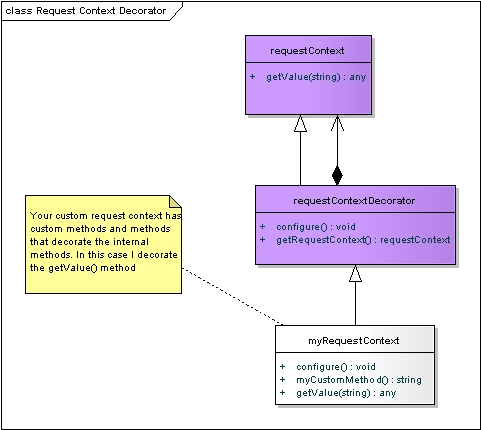Request Context Decorator
The request context object is bound to the framework release and as we all know, each application is different in requirements and architecture. Thus, we have the application of the Decorator Pattern to our request context object in order to help developers program to their needs.
So what does this mean? Plain and simply, you can decorate the ColdBox request context object with one of your own. You can extend the functionality to the specifics of the software you are building. You are not modifying the framework code base, but extending it and building on top of what ColdBox offers you.
Creating The Decorator
The very first step is to create your own request context decorator component. You can see in the diagram below of the ColdBox request context design pattern.

Create a component that extends coldbox.system.web.context.RequestContextDecorator, this is to provide all the functionality of an original request context decorator as per the design pattern. Once you have done this, you will create a configure() method that you can use for custom configuration when the request context gets created by the framework. Then it’s up to you to add your own methods or override the original request context methods.
Tip: In order to access the original request context object you will use the provided method called: getRequestContext().
Declaration
The following is a simple decorator class (MyDecorator.cfc) that auto-trims values when calling the getValue() method. You can override methods or create new ones.
As you can see from the code above, the possibilities to change behavior are endless. It is up to your specific requirements and it’s easy!
Leveraging The Controller
The request context decorator receives a reference to the ColdBox controller object and it can be retrieved by using the getController() method or via variables.controller. This will give you the ability to call settings, interceptions and much more, right from your decorator object.
Configuration
Now that we have created our MyDecorator.cfc let's tell ColdBox to use the decorator open your ColdBox.cfc and add the following coldbox directive:
The value of the setting is the instantiation path of your request context decorator CFC. That's it. From now on the framework will use your request context decoration.
Last updated
Was this helpful?